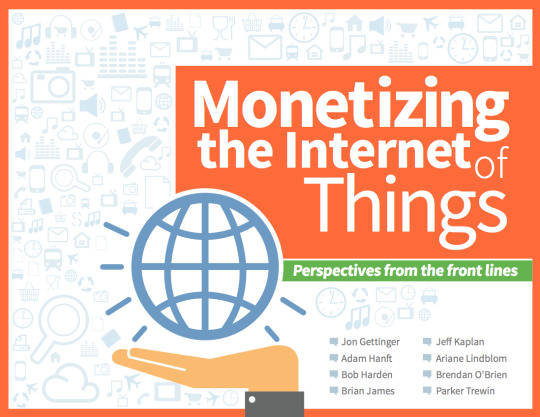#They even steal Institute tech so their human friends can study it :)
Text
Crows Of The Commonwealth
I was on CrowTok and it made me come up with an idea.
So, obviously a lot of the crows in the Commonwealth are made by the Institute, though I personally like to believe that there are still a lot of crows that are regular ones, too.
Crows are an incredibly smart species of bird, which makes sense as to why they're the ones the Institute use. To my memory, I don't think there are any other birds in the game. Again, I'd like to headcanon that they're not the only ones left but if only a few species of birds managed to survive the bombs and the aftermath, I wouldn't put it past crows to be one of those species due to that intelligence.
Crows are known for recognising people, which also works in favour of the Institute as to why they'd choose them specifically. If you are able to tell the difference between individual crows, you'll be less likely to question if a specific one if following you if you are aware they likely recognise you.
However, they're also known to bring gifts and trinkets if treated right, or actually attack people who don't. And they remember faces. I don't get the impression that the Institute treats them too kindly if they don't even consider Gen 3 Synths as people, who are literally created with technology and human biology/DNA.
If we imagine that the Institute Crows work like Synths do, then that means that they are also able to become independent like Synths can. We know they have the level of intelligence, more so than another species of bird, to perhaps reach that level of independence. That's exactly why the Institute picked them. Wouldn't it be ironic if that became part of the Institute's downfall.
So imagine a Sole Survivor, fresh out of the Vault, scared and cold on their first few nights. Hungry, tired, likely sick, grieving. Alone. They have Dogmeat. They have themselves. A few strangers they saved. Nothing else.
They're trying their best one night to settle. They've only been unfrozen for a few days by now, but have yet to leave Sanctuary. They chose to stay for a couple days to prepare for their long journey ahead, and rebuild their home so they had somewhere to go back to. Preston has taught them basics self defence and survival, Sturges has helped them temporarily fix the holes in their walls. They're not close to these strangers yet, but there's a small comfort in knowing there's still people, and people nearby to run to if anything not friendly comes knocking on their door.
They're picking at a 200 year old box of stale cereal, not able to stomach the taste just yet. In the end, they end up leaving it in a bowl for Dogmeat to have, preferring to sleep, hunger be damned. They sleep on the floor that used to hold the dinning table, not ready to sleep in the now-too-empty bedrooms.
By morning, their sleep is interrupted. Not by the cold October air that their thin, makeshift blanket- That doubles as their coat during the day- barley keeps away. Not by the sunlight that seeps in by the broken shards of class where the window used to be. Not by drops of rain that fall through the cracks in the ceiling. Not even by Dogmeat licking then awake, like he did yesterday morning. This time it's the sound of pecking and squawking that has Sole prying their eyes open.
A small group of grows picking at the bowl of cereal. They must've gotten in through what once was the window, or literally any of the holes of missing metal panels scattered throughout the building. Sole barely has it in them to care. They know they shouldn't waste food that could've gone to them or their new furry friend, but they truly cannot bring it in them to mind. They wonder if the birds have a hard time finding food, too, and decide it might not be a waste at all.
They sit up. A few of the crows fly up onto the windowsill at their movements, one stays enjoying their breakfast, unfazed. Sole waits, sitting still until the birds realise they have no intention of harming them. They glide back down onto the floor, going back to eating.
After a few moments, the crow that stayed perks his head up, neck twitching into an angle that lets him look at Sole. He hops over, stopping just before he reaches their lap. Sole raises their hand, thumb and index finger moving slowly until they land on its neck. His feathers bristle under Sole's pets, his feet dancing happily beneath him. The other crows finish their breakfast. Salem, Sole decides to call him, joins his friends who hop back onto the windowsill. They fly off. He turns his head to the side, a beady eye looking at Sole again. He squawks at them before flying off to join the others.
Sole spends the rest of their day taking metal panels from some of the completely collapsed houses to fix the holes in their walls. They're able to find paint at the old Red Rocket down the road when looking for more equipped tools. Repainting isn't exactly their priority right now, just making sure the house will be fit to stand against the weather, and for when it gets colder in the next few months. The paint will be useful when they get to the stage of being able to consider making it look presentable, however. Unfortunately, the only paintbrush they find is snapped in half. They toss it in frustration. Less so because of the brush itself, and more so because Sole has a lot of anger built up from the events of the last few days that they have no other outlet for.
They end up going home when the sun starts to set, having avoided the empty tomb of memories for as long as possible. It wasn't safe to be out so close to dark.
When they set down their tolls by the door, something on the kitchen counter catches their eye.
Upon inspection, they realise it's an intact paintbrush.
Their confusion lasts barely five seconds, as they hear a familiar squawk. Hoping on the windowsill is Salem. His eyes study Sole. He's waiting. Sole smiles, pulling open the duffle bag they'd taken on their supply run. They pull out two wild mutfruits, which they'd harvested from bushes near the station. Sole cuts them into smaller pieces, before tossing them gently into the grass of their back garden from the car porch. Salem glides to the pieces, now satisfied in knowing that Sole approved of and appreciated his gift. Sole looks up to the trees that border their garden where other crows have started to also descend from to join in on the food offering. Apparently, there's a lot more in this group than what Sole had assumed from the smaller one earlier. About twenty feathered creatures dance about on branches decorated by orange and brown leaves or nibble at the mutfruit in the grass.
Salem flies over once he's had his fill, taking a seat on Sole's shoulder. His friends also begin hopping over gradually, and Sole ends up sitting down to welcome them and pet their small heads. Dogmeat also seems to love the attention, or perhaps just the warmth that radiates from Sole's body as he curls up next to them. Every so often, one of them drops a trinket into Sole's lap as they snuggle into them. A random screw, some gears, even some bottlecaps. Bits and bobs that a few days ago, Sole would've considered mostly junk, even if they'd still been appreciative, but everything now is useful. They even drop a few things by Dogmeat's snout, who sniffs them, tail wagging. Sole doesn't think Salem appreciates the happy licks Dogmeat gives him, though.
Regardless, Sole breathes out slowly, deeply, as they take in the sunset and birdsong before them. It's the first time they've honestly felt any peace since leaving that godforsaken Vault.
Sole makes a mental note to redesign the kitchen window when they get around to fixing it so that it'll be able to open widely. They also begin thinking about designs for birdhouses, feeders, and small fountains.
It's safe to say Sole feels slightly better than they did when they went to bed last night.
They feel less alone.
For some reason, as Salem nestles into their lap, against their stomach, a small pressure builds in their gut. They can't quite shake the instinct, the thought that comes with it. The feeling that Salem feels less alone now, too.
#Aka a story where Sole unintentionally befriends the Institute crows and teaches them actual love#To the point where they start to also rebel against their creators. Sole starts finding crows that have clawed out their own eyes#Or that have scratched chunks (Chips and cameras) out of their necks and turns Sanctuary into. Well. A Crow Sanctuary#Sole accidentally trains a crow army to be loyal to them#They start getting to the point where crows start being able to send messages like pigeons for the Minutemen and Railroad#Deacon hated the idea at first and when he found out Sole was basically housing Institute spies almost had a heart attack#Then he got on board when he realised the crows were also starting to runaway from the Institute#Salem likes to prank Deacon#They even steal Institute tech so their human friends can study it :)#Who needs to train Deathclaws when you have an army of birds that are already trained in spy work#And who you can use to find Synth agents because they recognise their faces and WILL attack them on sight#Who needs the Mysterious Stranger when every bird in the 'Wealth will swoop in to peck and claw at a raider's face when you're outnumbered#Sole being the King/Queen/Master of crows goes hard ngl#Their animal friend perk is maxed out. They DO also raise a baby Deathclaw just because they can#I might make a fic that includes this idea tbh because I love it#And I have been wanting to make a realistic fic about what it would be like for Sole. Especially in the early days.#Sole Survivor#Salem The Crow#Dogmeat#Deacon#Fallout#Fallout 4
53 notes
·
View notes
Photo










EXPLOITING VICTIMS THE NEW WAY TO MAKE MONEY!
1. WHAT EVER HAPPEN TO THE MONEY THAT WENT TO HAITI?
2. HAITI LEGIT HAD TRUE VICTIMS
3. THE UNITED STATES OF AMERICA(AND SHE IS NOT ALONE). CREATES PROBLEMS BLAMES OTHERS (NATIVES) THEN SAY HEY WE NEED TO INVADE YOUR COUNTRY.
4. LOOK AT COUNTRIES FROM WESTERN ASIA. DESTROY A COUNTRY’S ECONOMY AND LAND. THEN TELL YOU “HEY I WILL FIX IT FOR A PRICE”. LOOK AT THE CONSTRUCTION COMPANIES IN IRAQ.
5. HOW DO YOU BAIT PEOPLE TO GIVE UP MONEY?
6. MAKE VICTIMS, SHOW HUNGRY KIDS, WOMEN IN DISTRESS. SOUNDS LIKE A INFOMERCIAL FOR IRAQ.
7. HAS ANY COMPENSATION BEEN GIVING TO THE CIVILIAN CASUALTIES(151,000-1,000,000) OF IRAQ.
8. WHO MADE MONEY OFF THEIR LIVES?

VICTIMS
1. AFRICANS BROUGHT TO THE USA AND OTHER AMERICAS
2.RAPED, BURNED ALIVE, CHILD MOLESTED, TAUGHT TO HATE THEIR IDENTITY( HATE YOUR AFRICAN RACE,LANGUAGE,NAME AND RELIGIONS), EXPLOITED
3. THE USA MADE A GREAT POLITICAL MOVE BY FREEING THEIR VICTIMS TO MAKE THEMSELVES LOOK GREAT TO THE INTERNATIONAL WORLD.
4. WHO PROFITED FROM THE VICTIMS OF SLAVERY??
5. BUT NOW EUROPEANS IN SOME CAPACITY MAKE MONEY OFF OF THEIR EXPLOITS OF AFRICANS. MAKE A MOVIE, BRAG ABOUT FREEING THEM, TV SHOWS, PBS SPECIALS, SET UP A MUSEUM TO DISPLAY THEIR FEATS. BUT DO THE PROFITS GO TO VICTIMS OF THIS HOLOCAUST.
6. HAS ANY VICTIMS OF THE SLAVE TRADE BEEN COMPENSATED?
7. CREATE VICTIMS AND MAKE MONEY OR POLITICALLY MONETIZING OFF OF THEM.

VICTIMS OF HUMAN TRAFFICKING
1. ONE OF THE MOST DISRESPECTFUL ACTS AS A HUMAN. TRAFFICKING
2. WITH ALL THE HIGH TECH GADGETS, YOUR PHONE KNOWS WHERE YOUR GOING BEFORE YOU DO. BUT NO REAL EFFORTS TO STOP TRAFFICKING.
3. WHAT ABOUT THE VICTIMS OF HUMAN TRAFFICKING.
4. “HEY YOU BEEN RAPED OR MOLESTED COME ON MY SHOW AND TALK ABOUT”. NOT FIX IT!!!!!!!
5. DO TV SHOWS MAKE MONEY OFF OF CELEBRITIES, KIDS, AND OTHERS TELLING THEIR STORIES ABOUT BEING MOLESTED OR RAPED.
6. CLICK BAIT, STIRS UP EMOTIONS, WATCH MY NEWS PROGRAM,( AND MOST OF THE PEOPLE WHO COMMIT THESE ACTS ARE PEOPLE IN THESE HIGH PLACES) DAMN NEAR EVERYONE IN HOLLYWOOD.
7. THE SAME PEOPLE(POLITICIANS, CONGRESSMEN, PRIEST, HOLLYWOOD INSIDERS,COPS) WHO COMMIT THESES CRIMES IN SOME WAY PROFIT OFF OF VICTIMS.
8. JUST THINK EVERY DOLLAR YOU GIVE TO THE CHURCH EITHER PAYS FOR A TRAFFICKED CHILD OR THE MONEY TO PAY THE FAMILY AND LAWYERS OFF.


VICTIMS OF RACISM
1. RACISM ONE OF THE MOST OVER USED TERMS IN MODERN HISTORY
2. HAS THE ISSUE BEEN FIX YET?
3. WOULD YOU WANT THE ISSUE FIXED OR WOULD YOU TAKE A CHECK
4. DO YOU POLITICIZE RACISM FOR YOUR OWN PROFIT JUST LIKE SOME POLITICAL FIGURES.
5. EVERY TIME SOMETHING RACIST HAPPENS, NEWS SHOWS RATINGS GO UP, MONEY IS BEING MADE. DO THESE SITUATIONS GET RESOLVED.
6. ARE THEIR ANY REAL INSTITUTIONS THAT REAL TACKLE THESE ISSUES.
7. RACISM IS A BUSINESS NOW. FOR POLITICAL POWER OR CASH MONEY( LIKE HOW COMPANIES PAY AL SHARPTON OFF)
8. POLICE BRUTALITY!!!!?????? “HEY LETS MAKE SOME CLOTHES DO A RAP VIDEO AND SELL SOME MERCHANDISE”
9. THE PEOPLE WHO’S FAMILY MEMBER GOT THEIR HEADS BLOWN OFF OR BEAT TO DEATH DO THEY MAKE MONEY OR DO TV SHOWS OR FAKE ADVOCATES GET A CHECK.
10. AND WILL THIS SOLVE POLICE BRUTALITY


NEW VICTIMS
1. THE INFAMOUS LETTER PEOPLE.
2. I AM NOT FOR OR EVEN SUPPORT THE CULTURE.
3. BUT, WISE ENOUGH TO TELL FAKERS. NOW EVERYONE IS AN ADVOCATE
4. 15 YEARS AGO SOMEONE WOULD HAVE SPIT ON YOU. NOW THEY ADVOCATES.
5. ALL THE POLITICIANS HAVE OPEN A NEW EYE TO THIS RIGHT!????
6. THIS IS A MONEY GRAB, PEOPLE LIKE MAKING MONEY, IF I HAVE A HAMBURGER SPOT, I DON’T CARE ABOUT YOU, I AM TRYING TO SELL YOU SOMETHING. SO I WILL GIVE YOU A MILK SHAKE AND HAMBURGERS WITH RAINBOW COLORS.
7. FAKE SUPPORTERS OF THIS MOVEMENT ARE LIKE MOST EUROPEAN AMERICANS. I CAN’T STAND TRUMP!!! THE TRULY DO LOVE TRUMP BUT CANT AFFORD TO SAY WHAT HE SAYS. SO THEY FAKE IT.
8. JUST LIKE MOST RACIST DO. “ I CAN’T BE RACIST SOME OF MY BEST FRIENDS ARE AFRICAN AMERICANS”. NOW! HEY ONE OF MY BEST FRIENDS IS GAY
9. PEOPLE ARE USING YOU FOR POLITICAL PROFIT. AND NOW PEOPLE HAVE A NEW WAY OF SELLING YOU SOMETHING.
10. THESE PEOPLE ARE NOT TRUE FRIENDS OF YOUR CAUSE, BAND WAGON RIDERS FOR NOW. IF THE PERSON TO YOUR NORTH,SOUTH, EAST OR WEST DON’T LIVE YOUR LIFESTYLE, THEIR FAKE.
11. NOW TV SEES MONEY TO BE MADE, NOW!, NOW!THEY WANNA MAKE MOVIES AND THEY DOWN FOR THE CAUSE. BUT ABOUT 16 YEARS AGO IT WAS HELL NO. THEY ARE JUST LOOKING TO EXPLOIT YOUR CULTURE.
12. JUST LIKE A POP SINGER EVERY ONE LOVES YOU LIKE A GOD, THEN NEXT YEAR NEW VICTIMS COME IN AND WILL STEAL YOUR SHOW. AND YOU WILL BE BROKE AND BY YOUR SELF.

1. TAKE YOUR PROBLEMS AND MAKE MONEY OFF IT OR MAKE IT A POLITICAL POWER.
2. HEY HOMOSEXUALITY IS JUST LIKE VICTIMS OF THE SLAVE TRADE.
3. SELL PEOPLE OF STORY SO GRUESOME IT WILL MAKE THEM CRY.
4. HUMANS SEEM TO BE HAVING SOME OF THE SAME PROBLEMS, BUT NOW YOUR CRISIS OR PROBLEMS BECOMES SOME ONE ELSE INCOME.
5. NEXT, Rates of suicide among Native Americans are the highest compared to other groups, and they keep increasing over the years. This is especially true among Native American youth, who are three and a half times more likely to commit suicide compared to other groups, according to a Indian Health Service study in 2012. This crisis is long overdue for some serious aid. SERIOUS AID WILL COME IN THE FORM OF ADDERALL OR SOME DRUG THEY CAN SELL THEM
6. CRAZY HUNGRY KIDS EVERY. SEND MONEY FAST. KIDS STAY HUNGRY AND PRIVATE COMPANIES WILL TAKE THE MONEY.
7. PEOPLE POUR OUR HEARTS OUT TO CAUSES ONLY TO FIND OUT NO ONE WANTS TO CURE IT JUST MAKE MONEY OFF OF IT.
8. LIKE HOW WESTERN MEDICINE DOESN’T CURE YOUR ILLNESS JUST SUPPRESSES IT FOR YOU TO COME BACK AND PAY MORE.
9. EVERY TIME WE CREATE VICTIMS, WE ARE CREATING NEW AVENUES OF MONEY AND EXPLOITATION.
10. EVERYBODY IS A VICTIM. EVERYBODY NEEDS EMPATHY. EVERYTHING IS JUST LIKE THE VICTIMS OF THE SLAVE TRADE.MY FATHER SCREAMED AT ME THAT TERRORISM. LITTLE EUROPEAN KID SHOOTS UP A SCHOOL NOW HE IS THE VICTIM OF MENTAL ILLNESS. SELL HIM A DRUG.
11. VICTIMIZATION EQUALS MONETIZATION . SO CREATE MORE OF THEM.
#VICTIMIZATION#monetization#monetize blog#monetis#monetise#terrorism#exploitation#RAPE#rape victims#victims#slavery#african slave trade#indian health service#arabs#iraq war#iraq#western medicine#adderall#food and drug administration#trump#donald trump#take my money#haiti#native american#native americans#kemetic dreams#school shootings#school shooting#suicide#suicide rates
317 notes
·
View notes
Text
Cryptocurrency 2018 Outlook: Three Trends Driving Success
This past summer I heavily researched the cryptocurrency markets, and I was able to discover three essential trends for 2018: fat protocols, scalability, and interoperability.
Since this summer, the cryptocurrency market has skyrocketed. The overall market size jumped an astronomical 485% (from $106 billion to $620 billion).
Those are insane returns. But I have a strong feeling we will see even greater gains in 2018.
Why do I think that 2018 will dwarf 2017’s returns?
All you need to know are three things... and you’ll make 10x your money or more next year.
Three Trends for 2018
In the past, I’ve talked about three tech themes that will drive value in cryptocurrency assets.
These three trends are scaling, interoperability, and fat protocols.
In 2017 these trends allowed me (and countless others) to generate insane gains such as...
8,700% on Ethereum, which is creating the a contract platform that many expect to exceed Bitcoin.
600% on XRP in 6 weeks, which is revolutionizing cross-border money movements between large institutions.
61,000% on NEO, which is enabling a smarter economy.
4,000% on Monero, which is meeting the demand for private transactions.
The three trends are:
The De-nationalization of Money: The rise of “private” money that’s not issued by any governments or central banks.
Closing the Gap Between Crypto Smart and the Public: A brand-new breed of investor (separate from institutions) is about to make the leap into crypto. Public money here we come. Think AOL before the tech boom.
Wall Street’s New Thoughts on Crypto: Institutions move in masses guided by big-picture stories called “narratives.” I’ll show you how the non-correlation narrative will be the story that lures trillions of institutional dollars into the crypto space next year.
Trend 1: De-nationalization of Money
Throughout centuries of human history, emperors, dictators, and governments have proven to be poor guides of national wealth.
Whether to fight wars, secure allies, or bail out banks, our leaders have always resorted to attacking, modifying and destroying our currencies to fund their personal economic shortfalls.
The only reason this has worked over the years is because governments have used force, or the threat of it, to maintain their monopoly to print money.
Friends, I’m here to tell you that after two millennia, government control over the money supply is about to come to an end.
It all has to do with a trend called de-nationalization of money.
It’s a multitrillion-dollar trend that will forever put a check on the government’s ability to steal your wealth through currency debasement.
Over the centuries, when a government has gotten into trouble, it simply printed more paper money or diluted the precious metal content of its coins.
Regardless of century, this pattern has held.
The Romans did this with the silver denarius. In the year 301, one aureus of gold (about 8 grams) would convert into 833 1/3 silver denarii. By 324, the silver denarii had been debased so much, it took 4,350 denarii to buy 8 grams of gold.
In 1803, Napoleon unilaterally replaced France’s existing currency (the assignat) with the franc. Overnight, he rendered the assignat worthless.
In 1933, President Roosevelt confiscated the nation’s gold, then promptly devalued the U.S. dollar by 70%.
In 1973, President Nixon took America off the gold standard. Over the next 40 years, the U.S. dollar fell in value by 80%.
During the 1998 Asian Crisis, several countries devalued their currencies by as much as 35%. Overnight, millions of people saw their cash savings collapse in value.
For thousands of years, we’ve accepted the fact that only governments can issue money. This has led humanity to sheepishly accept the theft of its wealth in the form of insidious currency debasement.
Whether by the threat of violence or imprisonment, we could only watch meekly as governments seized our wealth. Like a whipped dog that only knows submissive obedience to its master... we’ve blindly accepted this assault against our financial sovereignty.
Those days are over...
Since the time of cavemen, the stronger man has always been able to steal from the weaker man.
With cryptocurrencies, for the first time, the weaker man can keep his wealth safe from the stronger man. This is a life-changing paradigm shift. This type of wealth sovereignty has never existed before.
We finally have a way to secure part of our wealth in an asset that’s beyond the reach of any government.
Imagine if the “small” people of the world switch their fiat earnings to digital assets they control. What happens to the banks? What happens to the brokerage firms? What happens to the tax collectors? What happens to a nation’s ability to raise money to wage war?
You can’t print stadium-sized stacks of paper money anymore when the people have an alternative. This terrifies central bankers, central planners, and all other manner of despots.
Once humanity wakes up to the idea that it doesn’t have to put all its wealth into fiat currencies, we’ll see a tidal wave of money rotate out of paper money into cryptographic-secured money like bitcoin.
The denationalization of money trend means that just because we live in America... it doesn’t mean that we have to keep our wealth in U.S. dollars. We can use non-government alternatives like bitcoin, Ripple, Ethereum, Dash, Monero, and ZenCash.
The Emerging World Is Leading the Change
This is such a fundamentally important trend, but it’s easy to ignore if you live in the West.
You see, cash grabs by our Western governments tend to happen slowly. It’s like the steady decline of the dollar since Nixon took us off the gold standard. Whereas in emerging markets, money can evaporate overnight through hyperinflation.
The 4.6 billion people living in emerging markets are crying out for an alternative they can control and trust.
Just look at Venezuela and Zimbabwe, where inflation runs at 532.6% and 12,875% per year, respectively. The fiat currencies in both countries are so worthless (prices double in Zimbabwe every 24 hours) that bitcoin trades at huge premiums of 20% in Venezuela and 85% in Zimbabwe.
Bitcoin, among many other crypto assets, is the solution these billions have been yearning for.
Collectively, emerging markets account for $12 trillion worth of wealth. We’re betting on an exodus from shaky fiat currencies to crypto assets governments can’t debase.
With the proliferation of smartphones and cheap internet access, people can now be their own banks. That’s because they can buy and store digital currencies with their smartphones.
Just like how the emerging market skipped landlines in favor of wireless phones, we think they will skip banks and, instead, transact in cryptos via their smartphones.
We think the trend of denationalization of money can push the entire cryptocurrency market past the size of the gold market. (Cryptocurrencies have far more utility than gold... They’re easier to divide, store, save, and send.)
The entire gold market is worth about $8 trillion. Today, the crypto market is just $620 billion. That means we could see the whole crypto market grow 13 times on this one trend alone.
Trend 2: Public Participation
Want to enjoy a long, healthy life?
Eat right and exercise. Everybody knows that, right?
But just because most folks are aware of the benefits of eating right and exercising... that doesn’t automatically mean everyone will start taking action.
In fact, given what we know about human nature, that would be a crazy assumption.
Is Mere Awareness the Same as Participation?
Bitcoin has brought crypto to the public masses.
A crowd quickly gathers around me when people hear me say cryptocurrencies. They tell me, “Everybody knows about bitcoin now. The opportunity is over.”
That’s a false assumption. And all of us can profit from it.
You see, people sitting on the sidelines of the crypto market are confusing awareness with taking action. Just because a lot of people know about bitcoin, doesn’t mean they’re actually buying it.
I have people coming up to me all the time saying how great they think bitcoin is. But when I ask them if they own any... more often than not, they say no.
Usually, they’ll tell me they’re too busy to buy it... or they just don’t understand it... or they just haven’t gotten around to it.
My best guess is less than 2% of the people who ask me about bitcoin actually own any crypto assets. This aligns perfectly with a study which found that although 88% of those polled had heard of bitcoin, only 2% owned it.
So, what that tells me is that, while awareness is growing rapidly, public activity is significantly lagging.
That’s why it is a mistake to confuse awareness with public participation.
In 2018, the gap between awareness and participation will close.
Imagine for a second if you could take a diet pill and magically experience all the health benefits of working out and eating right without any of the work.
How successful do you think that pill would be? How many people do you think would take it?
Millions, right? Hundreds of millions, heck maybe billions of people would line up for a diet pill like that.
Well, the cryptocurrency equivalent of that will happen in 2018. Next year, we’ll have our diet pill moment.
The Magic Pill: Bitcoin
It’s about to become dramatically easier to buy and store bitcoin. Mark my words, we will see a bitcoin exchange-traded fund (ETF) launch in 2018.
Very soon, buying bitcoin will be as easy as clicking an icon in your E-trade account.
Imagine all the hassle of buying, storing, and sending bitcoin eliminated with a mere mouse click. That’s the promise held by the launch of a bitcoin ETF. Tens of millions of people will get their first taste of bitcoin through an ETF and that public demand will surge crypto prices.
Since 2014, people have been trying to get a bitcoin ETF approved. Odds looked slim, but the moment is now here.
So what happened?
The CBOE, CME, and the CFTC.
This trio of agencies and exchanges are paving the way for the approval of a bitcoin ETF. The Chicago Mercantile Exchange (CME) is the world’s largest futures market. The Chicago Board of Options Exchange (CBOE) is the world’s largest options market. And the Commodity Futures Trading Commission (CFTC) is the most powerful derivative regulatory agency in the country.
All three have come together to approve the launch of bitcoin futures and bitcoin options. For the first time, institutions have the ability to hedge their risk in bitcoin. This means they can buy bitcoin, then buy a futures or options contract that will protect them if the price of bitcoin drops.
Being able to hedge risk will bring a flood of public liquidity into the cryptomarkets.
In past rejections of bitcoin ETFs, the Securities and Exchange Commission (SEC) pointed to a lack of a hedging mechanism for bitcoin.
Now that the CFTC, CME, and CBOE have embraced bitcoin, we’ll see the SEC approve a bitcoin ETF in 2018.
The demand for this ETF will be unlike anything we’ve ever seen. A bitcoin ETF is the magic diet pill that millions of investors will reach for to gain bitcoin exposure.
In 2018, you’ll see the consumer pendulum swing from Awareness to Widescale Adoption. The first approved bitcoin ETF will bring a nationwide storm of public money into bitcoin.
This is just the first domino to fall. Soon after that, I expect the launch of the first crypto asset index ETF. This will surge trillions of new dollars into the entire cryptomarket.
The launch of a bitcoin ETF and a crypto index ETF will close the gap from awareness to full-fledged public participation. As this trend plays out, I think we’ll see at least 10% of America’s stock market wealth pivot into crypto assets.
At today’s levels, that suggests that as much as $10 trillion could find its way into crypto assets, meaning as much as 1,500% growth ahead for the entire cryptomarket.
Trend 3: Wall Street’s New Friend
Wall Street has a history of using stories to drive its investment decisions. Often these narratives are grounded in well-researched theories
Wall Street used to hate crypto, but it seems to be changing.
What would cause a normally prudent shepherd of capital to transform into a wild risk-taking cowboy?
This is not the first time as history lends us a few examples:
Junk Bonds
Before the 1980s, there was no such thing as a new-issue junk bond. All bonds were investment grade. They only became “junk” when they got into financial trouble.
An enterprising analyst named Michael Milken realized that junk bonds had very low default rates. Out of every 100 bonds that became junk, only 4% of them actually defaulted on their payments.
Milken used this low-default-rate narrative to sell over $500 billion worth of junk bonds through his firm Drexel Burnham Lambert. It became the largest underwriter of junk bonds in the world. At one point, Milken was making over $500 million per year for himself (that’s $1.1 billion in today’s money).
The profits in junk bonds sparked a Wall Street-wide stampede into the asset. By the end of the ’80s, companies had issued more than $996 billion in junk bonds.
Before the 1980s, there wasn’t a prudent bank manager in the country who was willing to buy junk bonds. Yet, by the end of the 1980s, America’s savings and loans institutions (S&L’s) were stuffed with $480 billion of them.
The lure of the new narrative of low default rates turned prudent bankers into rank speculators. But along the way, some made billions in profits trading junk bonds. Well-informed speculators made a ton of money during this mania.
DotCom Boom
In the mid-1990s, portfolio managers were loath to pay over 12 times earnings for stocks. By the late ’90s, earnings didn’t matter and they were paying an infinite price-to-earnings (P/E) ratio for stocks like Pets.com.
That’s because in the late ’90s, traders believed we had entered a “new era” of permanent prosperity. The internet would unleash a new paradigm of endless growth, they argued.
A narrative emerged that you could pay any price for a stock if the underlying business had “.com” in the name.
This narrative ensnared the entire investing public. Companies such as Cisco traded at 236 times earnings. AOL traded at 194 times earnings. And there were plenty of companies like WebVan, which reached a valuation of $1.2 billion with no earnings.
In all, more than 5 trillion institutional dollars flowed into internet stocks. Again, informed investors made a killing during the dot-com era. This was a fabulous time to get rich trading stocks.
The Housing Boom
After the dot-com bust, investors turned to real estate. The average home price had gone up every year since 1993, even during 2000 through 2003 when the market swooned.
By 2004, some argued that housing prices could never go down. Based on that narrative, trillions of dollars poured into the real estate market.
At the same time, housing ownership in the U.S. reached a record high, topping 69%. This should have led to the cooling down of the market, as there were less qualified buyers in the market.
But Wall Street couldn’t resist the lucrative opportunity. It started issuing loans with little to no documentation. It used adjustable-rate loans, which lowered loan payments. And it let borrowers use their homes like ATMs, making the problem even worse.
At the same time, the banks were repackaging these loans and selling them to other banks as prime loans. In other words, even though the loans were with the riskiest buyers, Wall Street pitched them as AAA-rated.
Home prices continued to go up, reaching a peak in 2007.
Just like in the junk bond and internet booms, investors smart enough to play the new narrative made fortunes in housing stocks, finance stocks, and materials stocks.
Behind each of these frenzies was a new story that convinced these managers to throw their normal risk management out of the window and go “all in.”
What Does This Means for Cryptocurrencies?
This whole lead-up might sound really negative for bitcoin and cryptos in general. It’s not. I’ve always told you that bitcoin and the crypto markets are real, but I expect they will get out of hand just like the junk bond market, internet stocks, and the housing market did.
That doesn’t mean we can’t make a fortune along the way. As you know, I’ve been prudent in our position sizing. And along the way, I’ve had us scoop “cream” off the top of the market-always making sure we are harvesting profits.
If you stay on the right side of manias, they are fabulous wealth-generators.
The point of this history lesson is that Wall Street narratives are very powerful. And they often get wildly out of hand.
A New Story Appears
So, what new narrative will propel bitcoin and crypto assets into the forefront of Wall Street’s collective consciousness?
Let’s start with Wall Street’s main criticism of bitcoin: volatility.
The establishment sees bitcoin’s volatility as a problem because low-volatility portfolio models drive Wall Street.
You see, Wall Street makes its money by holding on to your money as long as possible so they can keep milking you for annual fees. It deliberately tries to tamp down volatility to lull clients into a false sense of security.
When values swing around too much, clients get scared and start to pull out of their investments. Wall Street hates this. Remember, it makes its money by holding on to your investment dollars for as long as possible.
Since bitcoin is so volatile, it hasn’t fit neatly into the Wall Street profit model.
But that’s changing. Study after study is showing that bitcoin is uncorrelated to other assets. For example, a study by the World Academy of Science, Engineering and Technology concluded that adding bitcoin to your portfolio gives better risk-adjusted returns and that bitcoin should be considered a new asset class.
Here’s what that means...
Correlated assets move together in price. And assets with inverse correlations move in opposite directions in price. Uncorrelated assets are unaffected by the forces that affect correlated and inversely correlated assets.
Why is that important?
One of the tricks Wall Street uses to tame volatility is to build portfolios with inverse correlations. For example, when stocks go down, bond prices usually go up. That’s a major reason most money managers tell you to own stocks and bonds.
It has little to do with delivering great advice tailored to your needs. They just want to keep the overall volatility down so they can milk your investment account for 40 years of fees.
So, what does this have to do with bitcoin?
Wall Street is starting to realize that bitcoin is uncorrelated to any other asset. That means the price of bitcoin is unrelated to the price of gold, stocks, bonds, or commodities.
In that context, bitcoin’s volatility goes from being a foe to a friend.
We envision Wall Street’s pitch will be that, by allocating 5-10% of your portfolio to bitcoin and other cryptocurrencies, you can actually bring down volatility. That’s because bitcoin is unaffected by crashes or booms in the stock, bond, oil, or gold markets.
The S&P 500 doesn’t affect bitcoin. The Brent Crude Index doesn’t affect bitcoin. Gold prices don’t affect bitcoin. The Consumer Price Index doesn’t affect bitcoin.
The result of adding crypto to a well-diversified portfolio is that you’ll see overall volatility actually drop. The World Academy of Science, Engineering, and Technology study bears out this narrative.
Here’s how we think it’s going to play out.
In the near future, we’re going to see an endowment or pension fund add bitcoin to its portfolio. It won’t be a large stake, but that won’t matter.
We expect the fund will explain that it’s using bitcoin as a non-correlated hedge to smooth out volatility.
When that happens, watch out. Wall Street will grab on to the “non-correlated narrative” and run with it like a dog with a stolen pork chop.
I’ve shown you how this has played out before. Institutions did it with junk bonds in the ’80s. They did it with internet stocks in in the ’90s. And they did it with housing in the ’00s.
At first, they’re considered weird investments. Then, a new narrative takes hold and institutions start using them, and they get legitimized. Before long, everyone on the Street is using the product and we’re in a full-fledged mania boom.
It will be the same for bitcoin and the entire cryptocurrency market. Global stock market wealth is approaching $100 trillion. We think 5-10% of that will be diverted into the cryptocurrency market under the narrative of lowering risk.
That’s almost 20 times more money than is in the crypto market currently. We think it’s going to cause prices to boom higher.
All Summed Up
This past summer I noticed three trends: fat protocols, scaling, and interoperability. I said if we got into ideas built on these trends, we’d make a killing.
Going into 2018, we have three new trends that will have an even bigger impact on the market.
As these three play out, we could see $5-10 trillion come into the crypto market next year.
This extra $5-10 trillion rushing headlong into a crypto market that is barely a half-trillion big is going to cause crypto prices to soar. And we will be there every step of the way making money hand over fist.
So, if you feel like you got in too late, relax. Take a breath because this ride is just getting started.
Post Source Here: Cryptocurrency 2018 Outlook: Three Trends Driving Success
0 notes